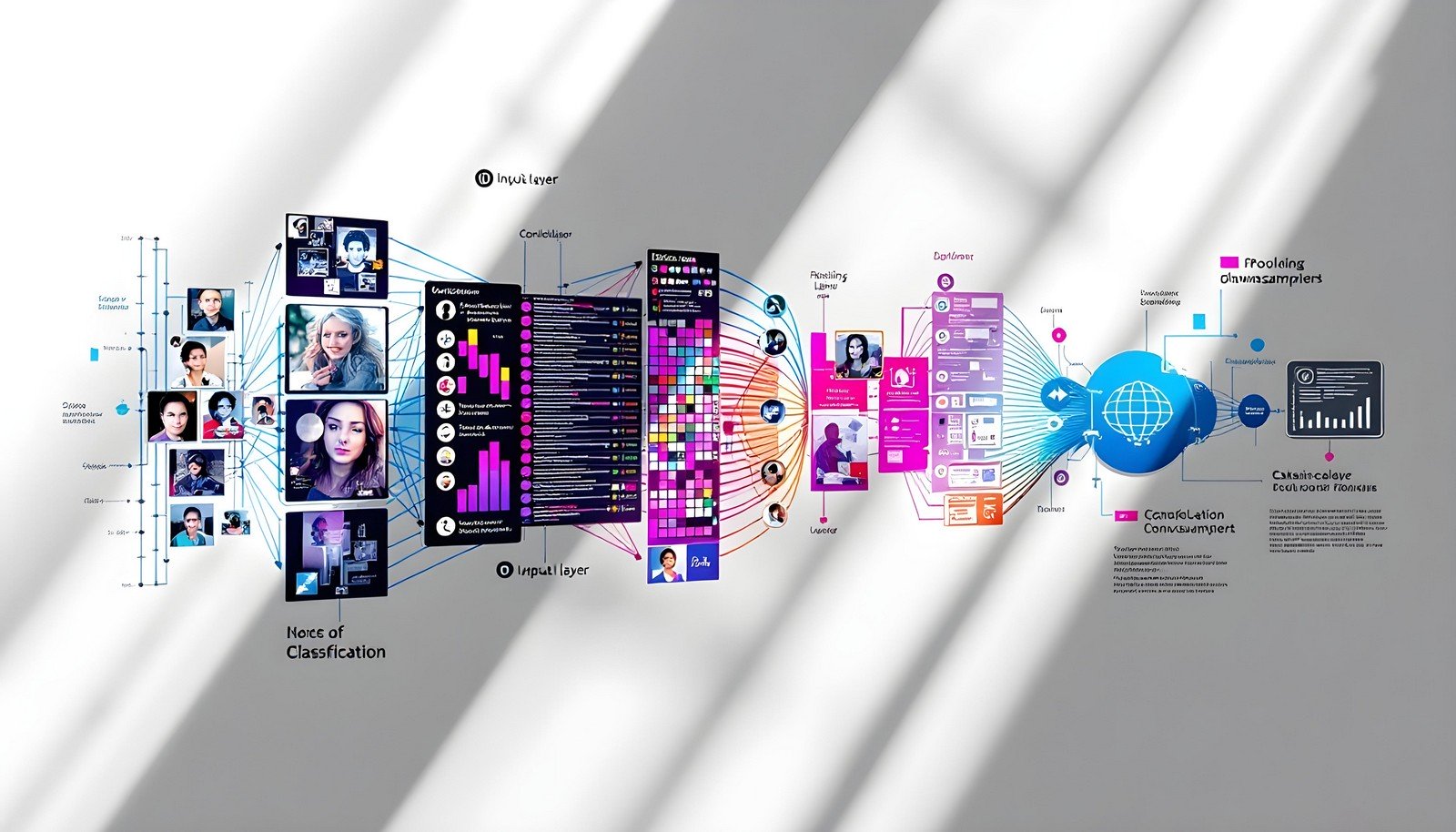Convolutional Neural Networks (CNN)

Quick Navigation:
- Convolutional Neural Network Definition
- Convolutional Neural Network Explained Easy
- Convolutional Neural Network Origin
- Convolutional Neural Network Etymology
- Convolutional Neural Network Usage Trends
- Convolutional Neural Network Usage
- Convolutional Neural Network Examples in Context
- Convolutional Neural Network FAQ
- Convolutional Neural Network Related Words
Convolutional Neural Network Definition
A Convolutional Neural Network (CNN) is a type of artificial neural network designed specifically to process structured grid-like data, such as images. It is built using layers that mimic the visual cortex of the human brain, allowing it to identify patterns and features in visual data through a series of convolutional, pooling, and fully connected layers. These networks are particularly powerful for image recognition, classification, and computer vision tasks due to their ability to learn spatial hierarchies of features from input images.
Convolutional Neural Network Explained Easy
Imagine you have a robot that looks at pictures and tries to recognize what’s in them. A Convolutional Neural Network is like the robot’s brain. It breaks the picture into smaller pieces, looks for shapes or colors it recognizes, and then puts all the clues together to figure out what the picture shows. It’s like how you might see two circles and a smile and know it’s a face.
Convolutional Neural Network Origin
The concept of Convolutional Neural Networks emerged in the 1980s with early neural network research. Yann LeCun is often credited for pioneering CNNs when he developed LeNet-5, a model designed for handwritten digit recognition. The development of CNNs gained momentum in the 2010s with advancements in computational power and the availability of large datasets, propelling breakthroughs in computer vision and deep learning.
Convolutional Neural Network Etymology
The term “convolutional” comes from the mathematical operation ‘convolution’ used in the network’s architecture, which processes data by combining inputs over local regions.
Convolutional Neural Network Usage Trends
CNNs have seen a surge in popularity since the 2010s, mainly due to their success in image processing applications. Their usage extends beyond traditional computer vision tasks to areas like natural language processing, video analysis, and even self-driving technology. The advancements in GPU technology and frameworks like TensorFlow and PyTorch have also significantly contributed to their widespread adoption.
Convolutional Neural Network Usage
- Formal/Technical Tagging: machine learning, deep learning, image processing, neural network
- Typical Collocations: CNN architecture, deep convolutional layers, image classification, feature extraction
Convolutional Neural Network Examples in Context
- “The researchers used a Convolutional Neural Network to improve the accuracy of their facial recognition software.”
- “Convolutional Neural Networks are essential for modern image recognition algorithms, enabling computers to achieve near-human accuracy.”
Convolutional Neural Network FAQ
- What is a Convolutional Neural Network?
A type of neural network designed for image processing and recognition tasks. - How does a CNN work?
It uses layers of convolutional operations to scan and learn features from input data. - What are the main components of a CNN?
Convolutional layers, pooling layers, and fully connected layers. - Why are CNNs good at image recognition?
They excel at detecting spatial hierarchies in data through pattern recognition. - Who developed the first CNN?
Yann LeCun, with the creation of LeNet-5. - What is the role of pooling layers in CNNs?
Pooling layers reduce the dimensionality of the feature maps to speed up processing and reduce complexity. - Can CNNs be used for non-image data?
Yes, they can also be applied to 1D or 3D data such as audio or video analysis. - What is feature extraction in a CNN?
It’s the process of identifying significant patterns from input data. - How do CNNs differ from traditional neural networks?
CNNs use convolutions to focus on local regions of input data, unlike fully connected layers. - What are common applications of CNNs?
Image classification, object detection, medical imaging, and autonomous driving.
Convolutional Neural Network Related Words
- Categories/Topics: deep learning, artificial intelligence, computer vision
- Word Families: convolution, neural, network, classifier, feature map
Did you know?
In 2012, a Convolutional Neural Network designed by Alex Krizhevsky, known as AlexNet, won the ImageNet competition by a significant margin, achieving a breakthrough in image classification accuracy. This win sparked a renewed focus on deep learning research and solidified CNNs as a powerful tool in artificial intelligence.
PicDictionary.com is an online dictionary in pictures. If you have questions or suggestions, please reach out to us on WhatsApp or Twitter.Authors | Arjun Vishnu | @ArjunAndVishnu

I am Vishnu. I like AI, Linux, Single Board Computers, and Cloud Computing. I create the web & video content, and I also write for popular websites.
My younger brother, Arjun handles image & video editing. Together, we run a YouTube Channel that's focused on reviewing gadgets and explaining technology.



Comments powered by CComment